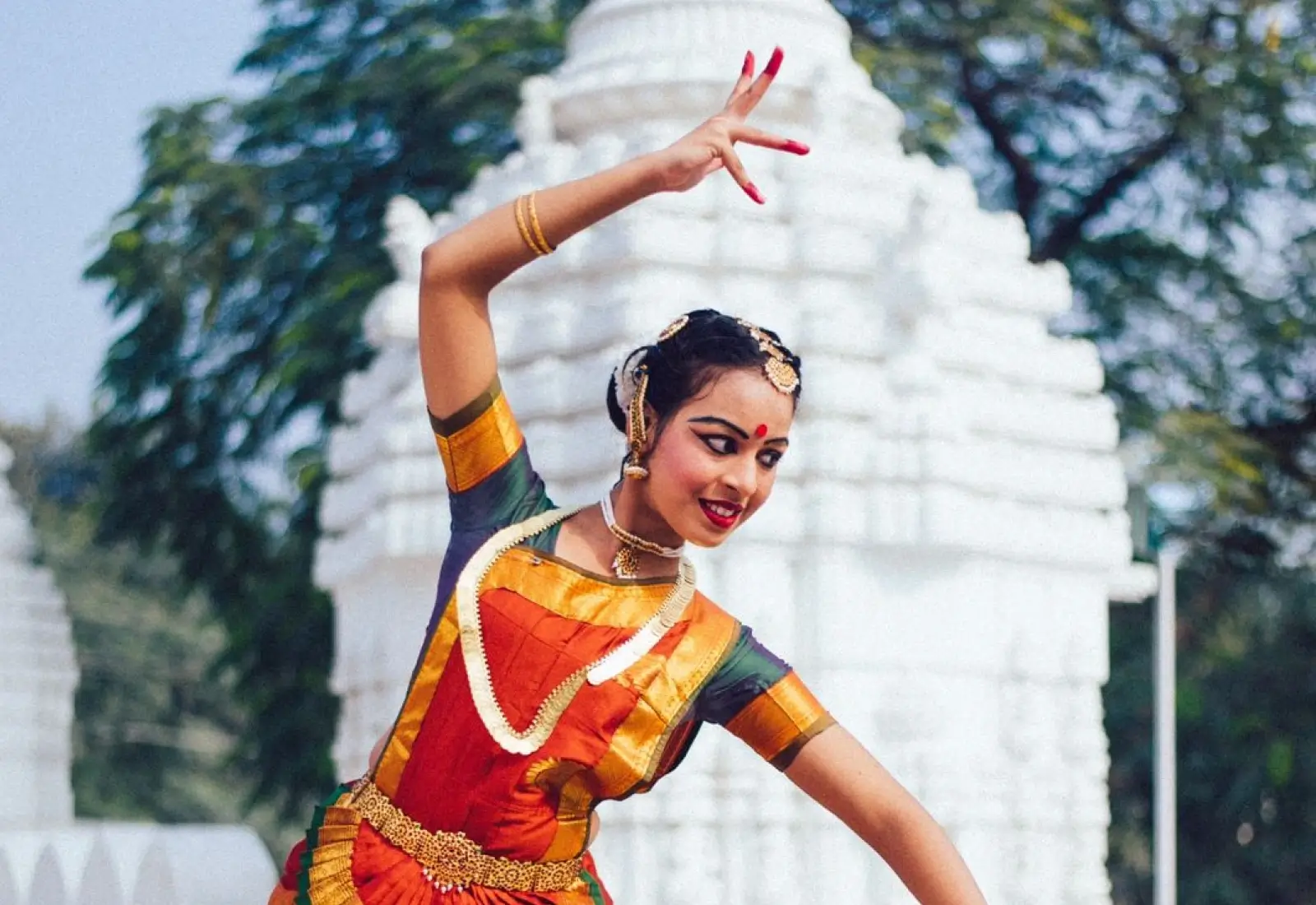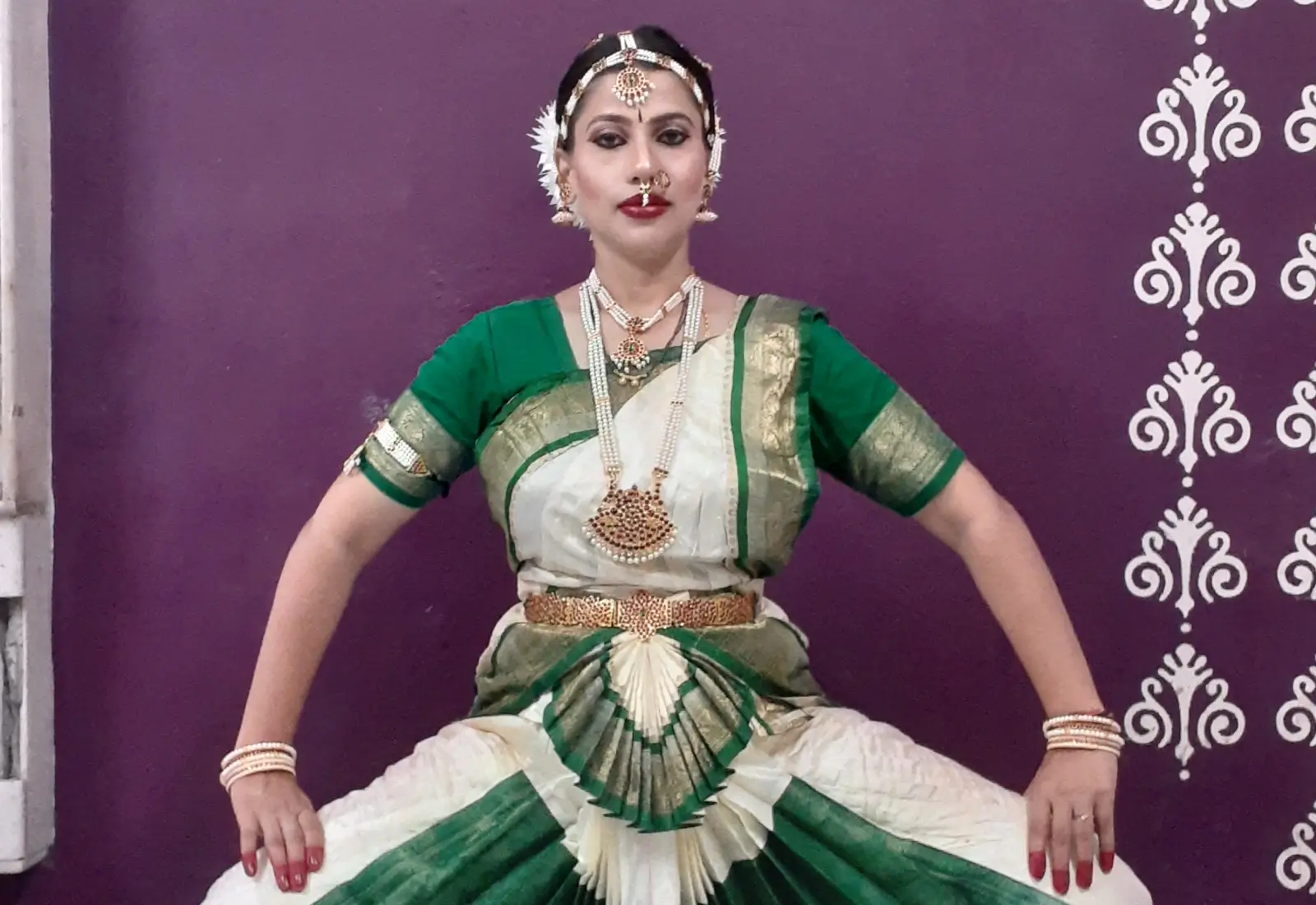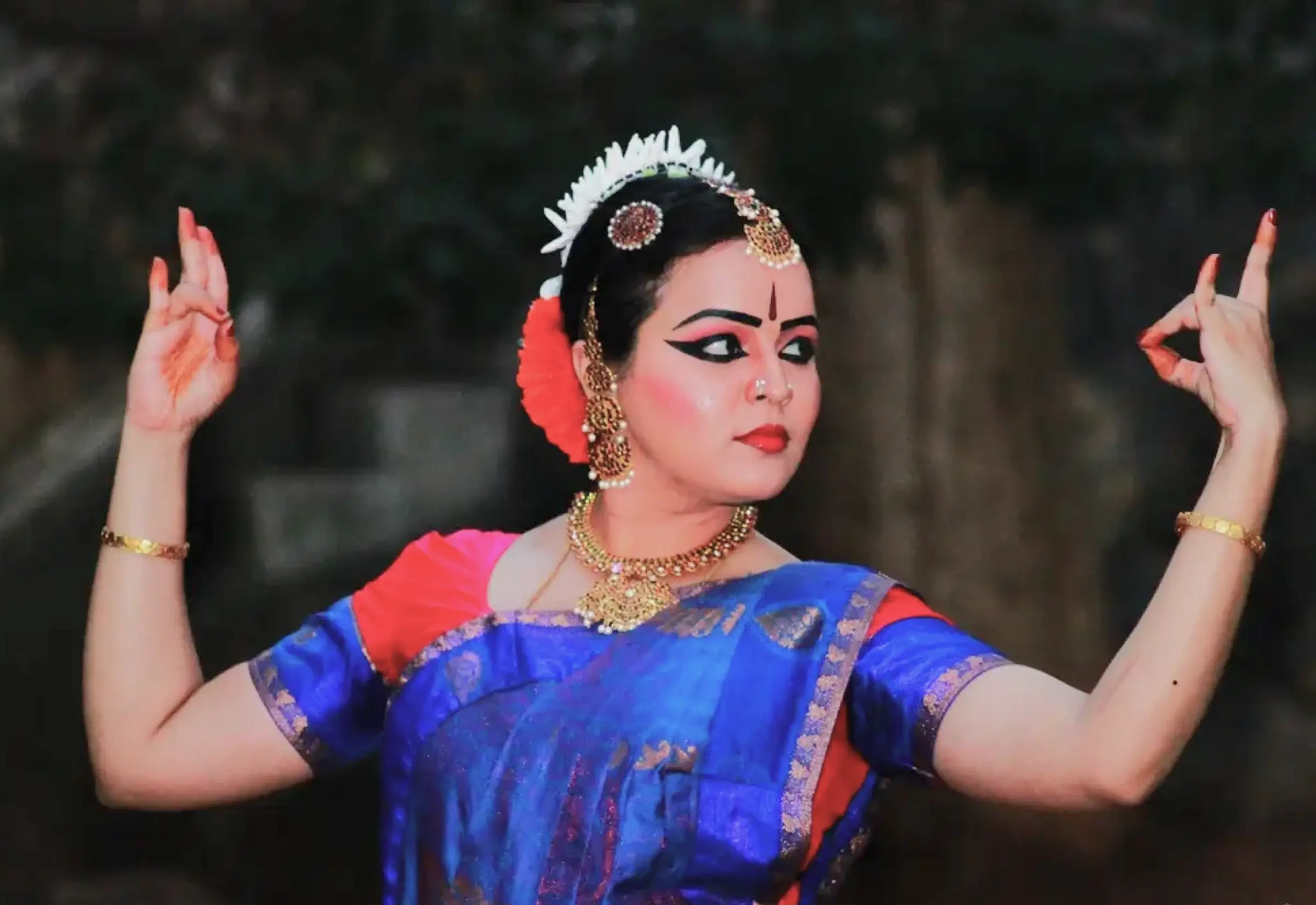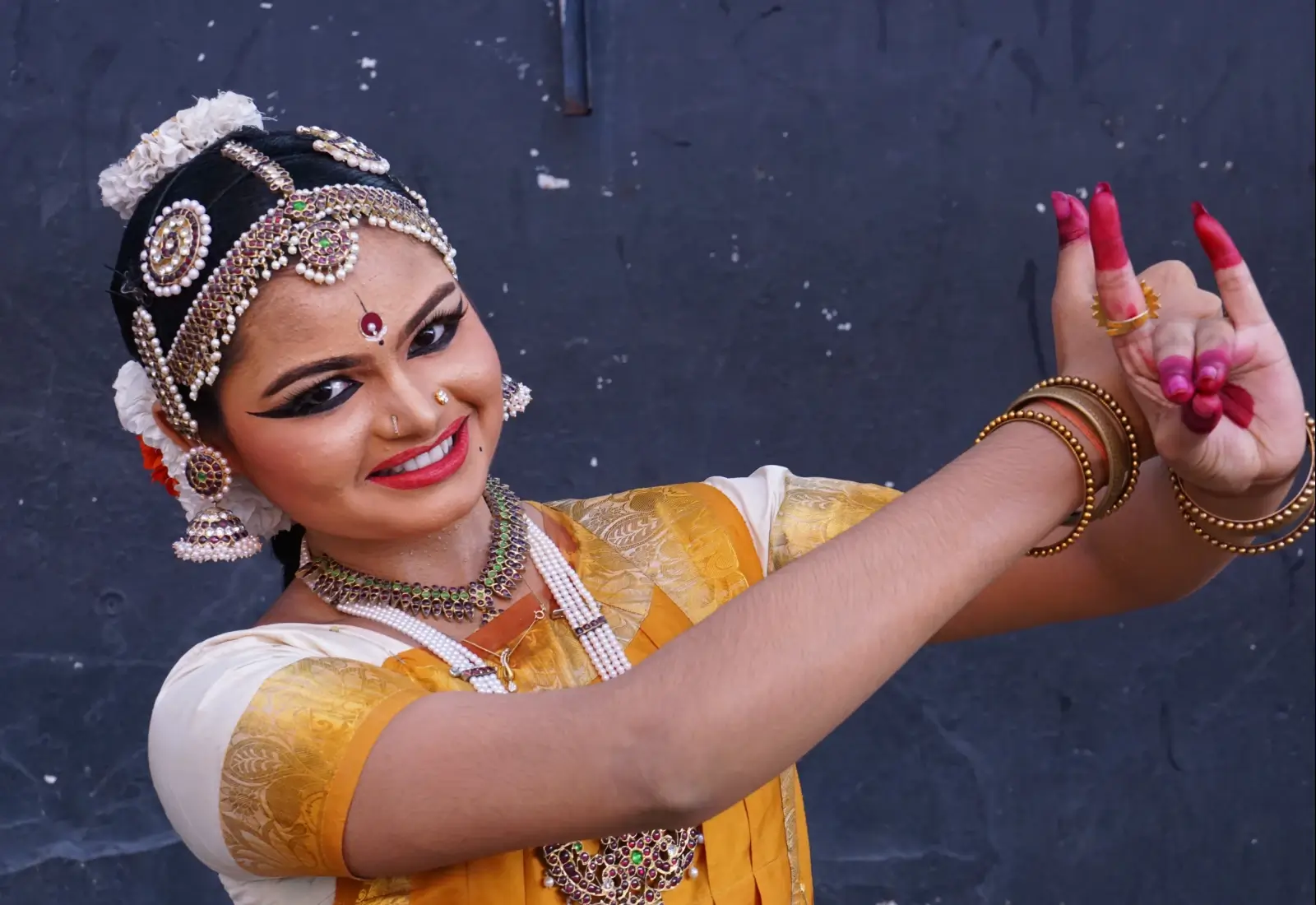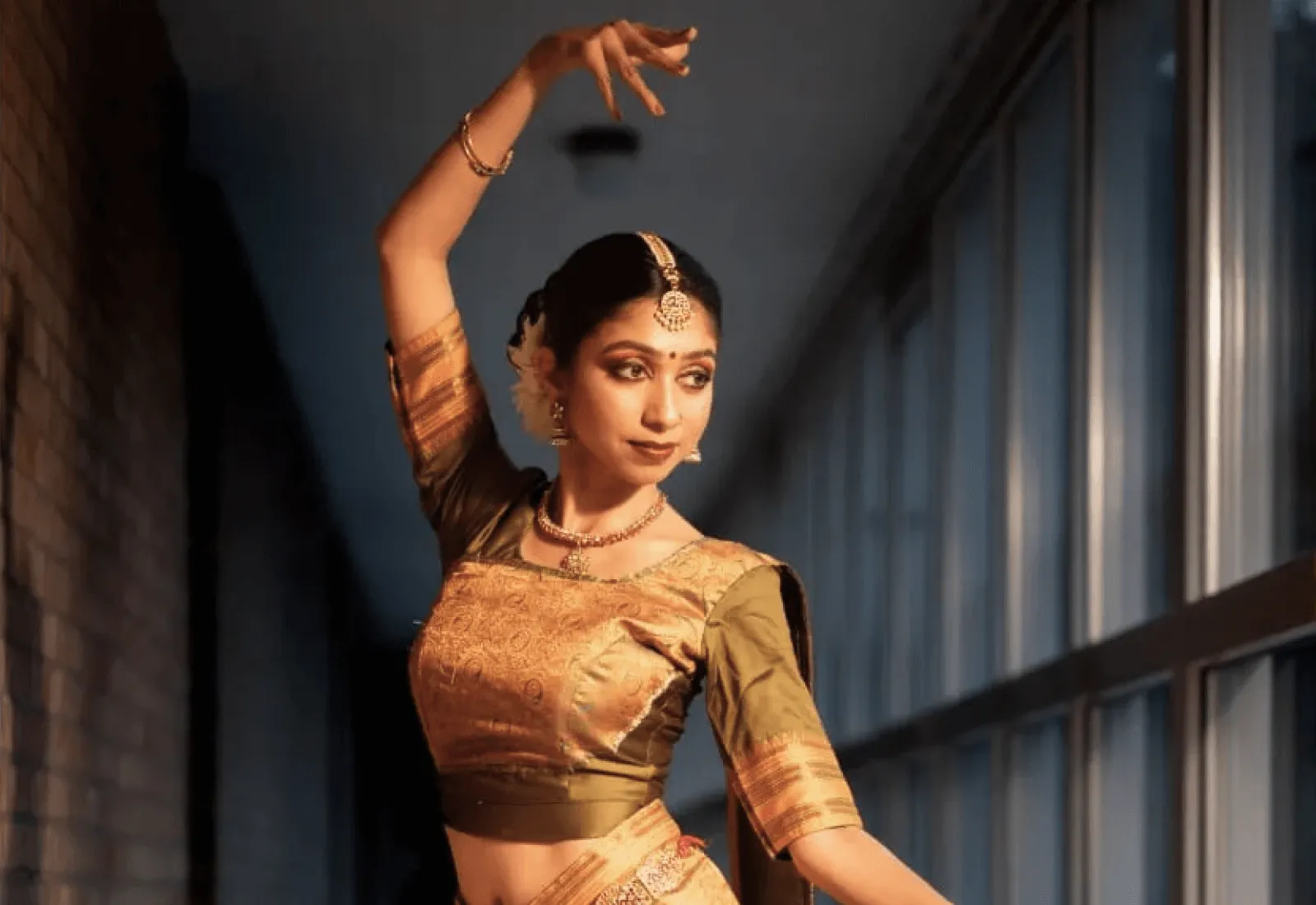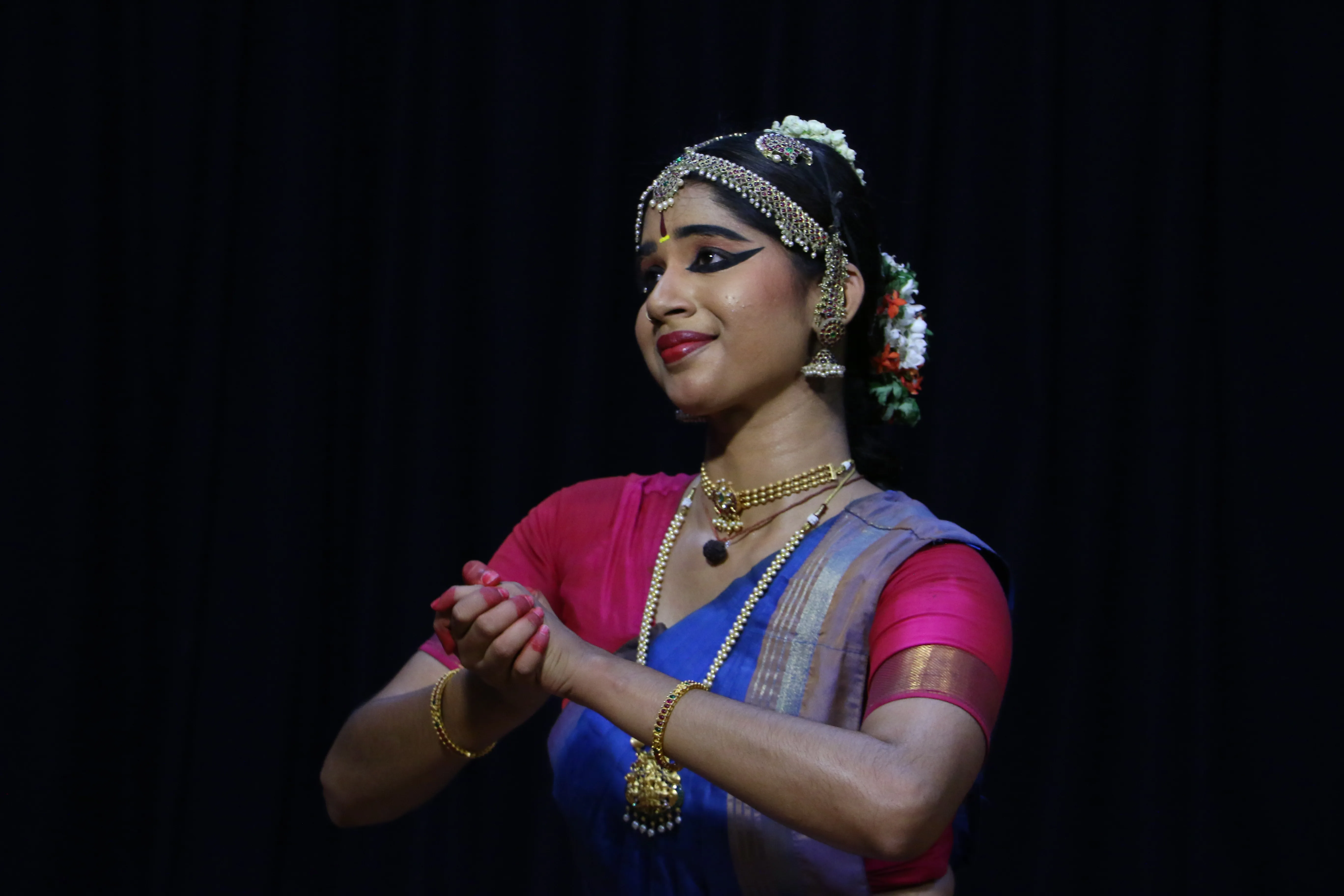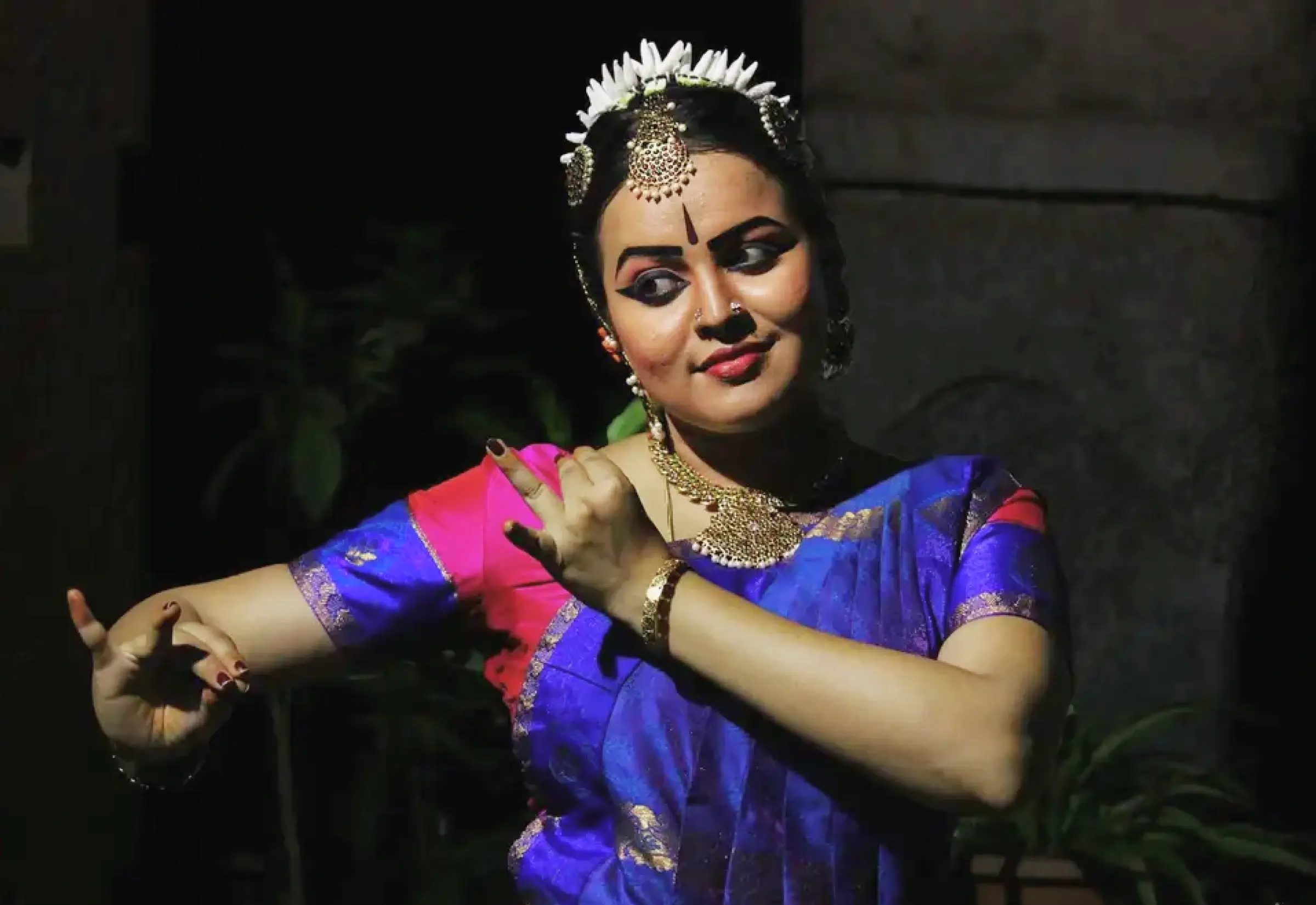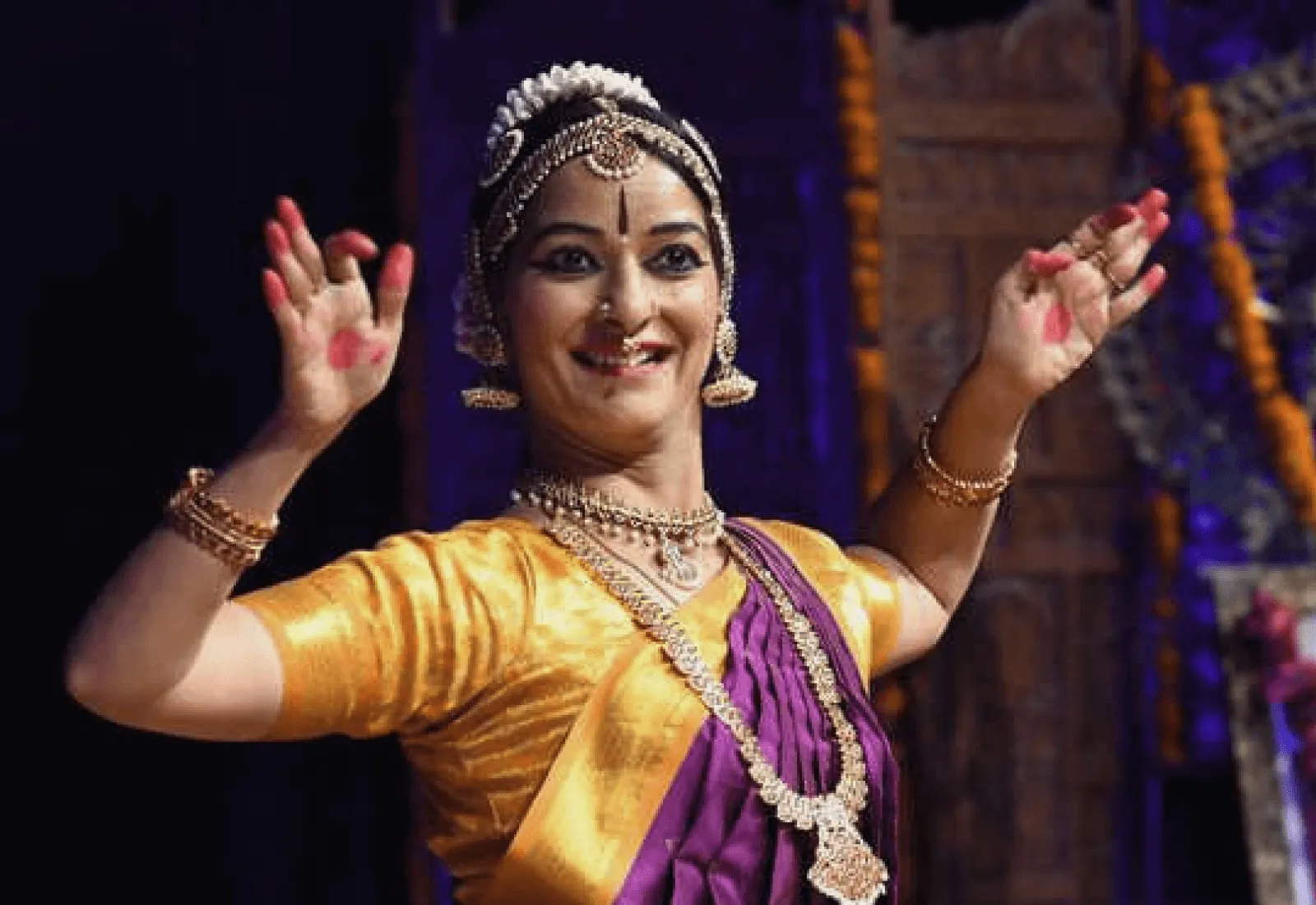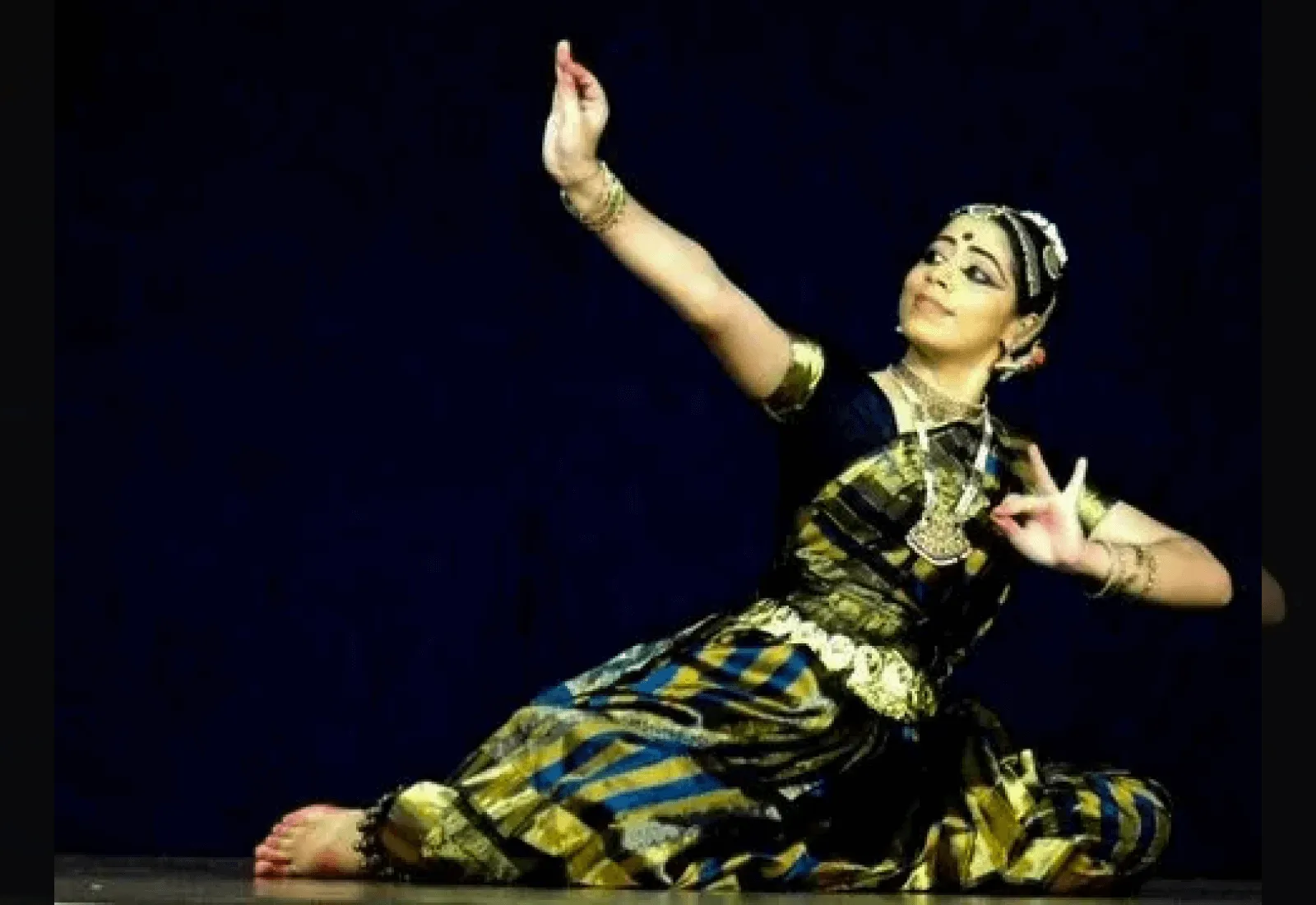Bharatanatyam Dance Overview
Bharatanatyam is an Indian classical dance that originated in the Hindu temples of Tamil Nadu in southern India. Bharatanatyam dance is a tradition steeped in Indian history and culture.
Today, Bharatanatyam is a dance style that encompasses religious and non-religious themes, as well as fusion styles.
Characterized by precise movements, sharp edges, and expressive body language, this tradition has delighted audiences for generations.
Like many other aspects of Indian tradition, this art form has struggled through times of oppression. However, with the efforts of teachers and students all over the world, Bharatanatyam has been revived to continue to serve the people who find joy in the formal and intuitive expressions embodied in the structure of the dance.
Bharatanatyam word was derived by joining two Sanskrit words: ’Natyam’ meaning dance and ’Bharata’ which is a mnemonic containing ’Bha’ (bhava/emotions), ‘Ra’ (raga/melody), and ‘Ta’ (tala/rhythm). Thus the term Bharatanatyam means a dance that expresses Bhava, Raga, and Tala.

History of Bharatanatyam
The history of Bharatanatyam is a testament to the resilience and adaptability of this art form. Bharatanatyam originated from the text Natya Shastra and grew roots in temples with the intent of deepening the religious experience. From its sacred origins in temple rituals to its resurgence as a revered classical dance, Bharatanatyam continues to enchant audiences with its beauty, grace, and profound storytelling. It remains an integral part of India's cultural heritage, embodying the rich traditions and artistic expressions of the land.
Ancient
The theoretical structure of Bharatanatyam is known as ‘Sadir,’ and traces back to the foundational text on artistic expression, Natya Shastra. Legends of Lord Brahma reveal him as the creator of Bharatanatyam, who performed the dance to sage Bharata, who in turn wrote the dance form into the Natya Shastra. The practice of the Bharatanatyam style got its start in South Indian temples, where Devadasi (dancers dedicated to serving the Lord as servants) performed this dance along with spoken services. Dated back to 300 BCE, this was the original performance style of Bharatanatyam.
Medieval
The practice continued and grew in popularity in South India. Many temples are adorned with sculptures of Lord Shiva in Bharatanatyam poses. The eastern gopuram of Thillai Natarajar Temple, dedicated to Lord Shiva, is adorned by sculptures of 108 Bharatanatyam poses that are carved into small rectangular panels. Additionally, inside of cave one of Karnataka’s Badami cave temples, Lord Shiva is displayed in a 5-ft tall sculpture as Nataraja, posing in Tandava dance. This sculpture includes the 18 arms of Shiva expressing mudras (hand gestures) included in the school of Bharatanatyam.
Modern
At the start of British colonial rule, the invaders viewed the Devadasis of South India as disgraceful, equating the long-studied and religiously poignant Bharatanatyam tradition to the activities of courtesans. They instituted a ban on numerous classical Indian art forms, thus ending the custom of temple Bharatanatyam performances.
It wasn't long before classical art revivalists began working together to resurrect the art form. Lawyer, activist, and classical artist E. Krishna Iyer became involved in the fight to revive this traditional style of dance until he was incarcerated on charges of nationalism and subsequently imprisoned. While in prison, Iyer advocated for the renewal of Bharatanatyam dance with theosophist and choreographer, Rukmini Devi Arundale. Later, the two of them founded the Madras Music Academy where they worked with the community to save Bharatanatyam dance, among other traditional art forms.
This revered classical dance style continued to grow in popularity as more and more students took up the study. Today, the Bharatanatyam dance is performed and celebrated all over India, as well as abroad, and is known as one of the most prominent Indian dances.
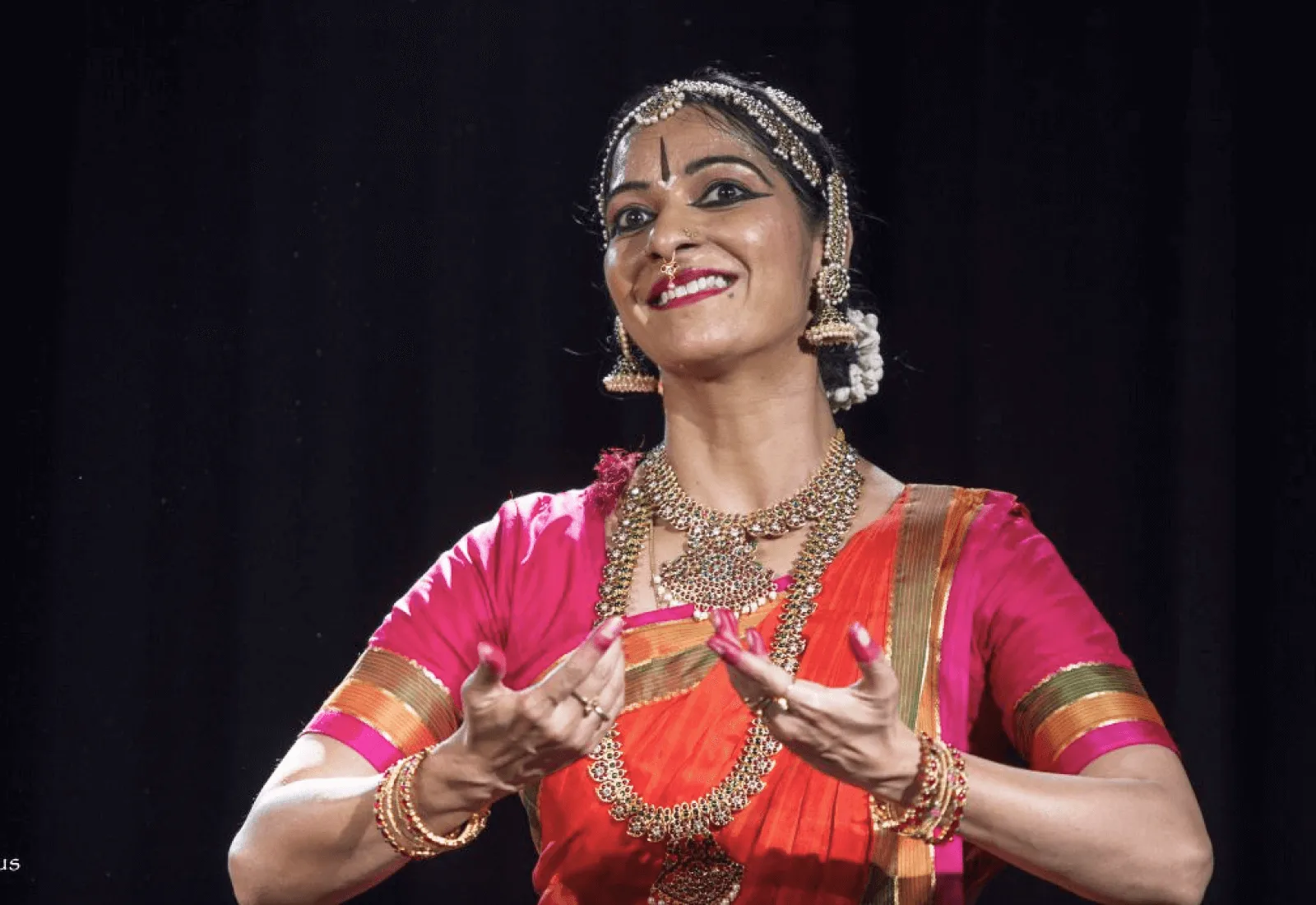
Bharatanatyam Principles and techniques
Bharatanatyam dance is broken down into three very broad divisions: Nritta, Nritya and Natya.
Nritta: The technical aspect of the performance in which the dancer performs pure Bharata Natyam movements with particular attention to speed, pattern, form, range and rhythm without the introduction of any interpretive elements.
Nritya: The aspect of the dance in which the dancer incorporates spiritual themes, feelings, and expressive gestures. In order to convey the Nritya, the body movements and gestures are typically slower and harmonized with the musical notes of the musical piece.
Natya: Conveyed with the dancers maintaining particular body movements for specific characters which are communicated through interpretive dance.
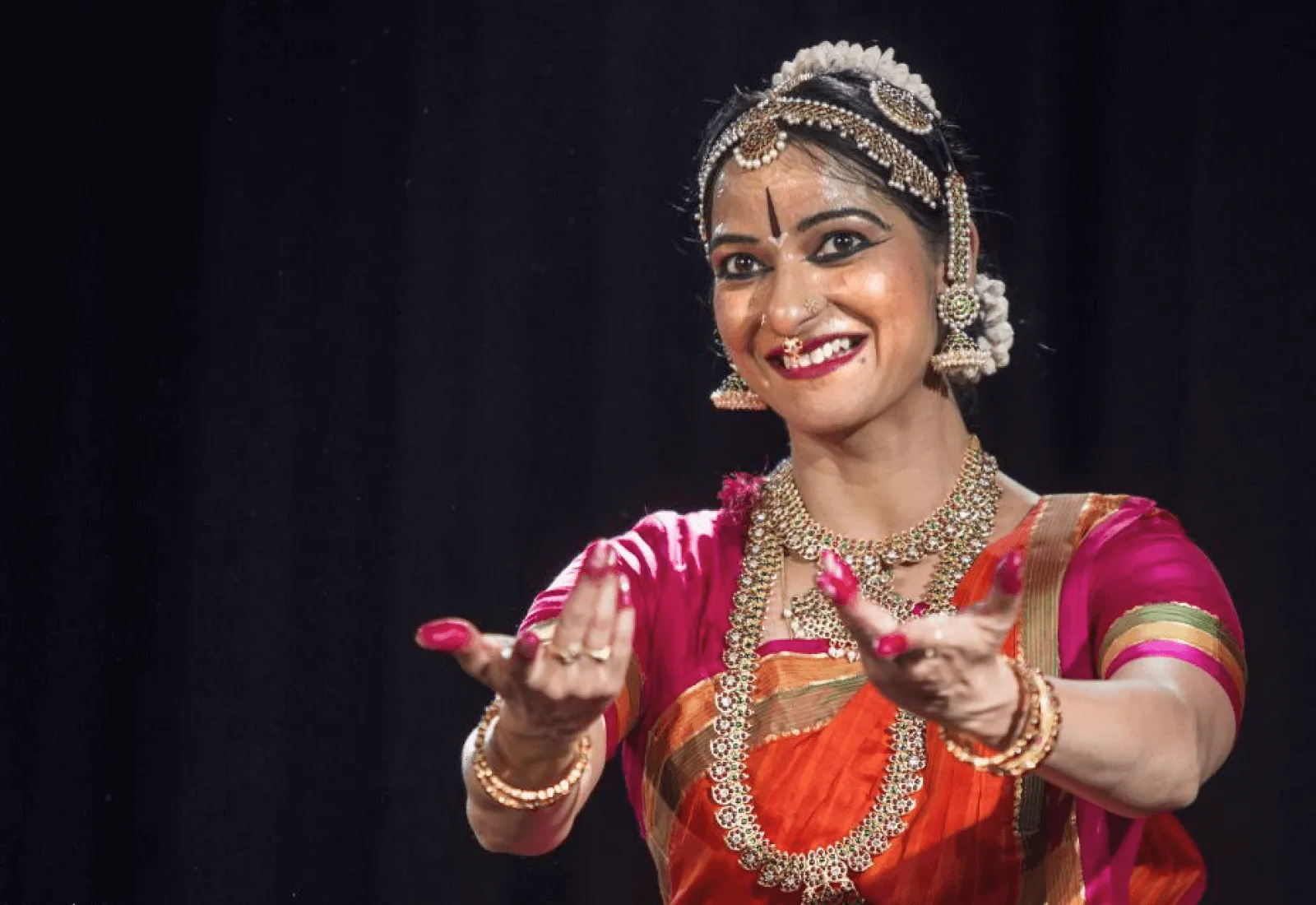
Bharatanatyam Dress
The Bharatanatyam dress worn by Bharatanatyam dancers is traditionally adorned with robes consisting of elaborate tailor-made saris. The front of the sari is embellished with a specially pleated fabric that will open in a fan-like pattern when the dancer bends her knees or displays her more intricate footwork. The artist will also typically wear leather straps (called ghunghru) around her ankles so the audience may hear, as well as see, her foot movements.
The dancer emphasizes her facial expressions and head movements with jewelry, including pieces on her head, nose, ear, and neck. Heavy makeup covers the face of a dancer to ensure the audience is in full view of her expressions and her hair is traditionally done in a neat plait decorated with jewelry or flowers. Lastly, the fingers and toes are brightened with red henna to emphasize the gestures of her hands.

Bharatanatyam Performance
The Bharatanatyam dance performance consists of six portions: Alarippu, Jathiswaram, Shabdam, Varnam, Padam, and Tillana.
Alarippu: A Tamil word meaning ’to bloom’. Alarippu is the beginning portion of a performance, consisting of a set of movements set to a beat. This portion is typically viewed as a warm-up for the dancer to prepare for the upcoming hours of performance.
Jathiswaram: During this portion of the dance, the movements become more complex. While not conveying any meaning yet, the dancers perform highly skilled and practiced postures leading into the next phase.
Shabdam: This portion of the dance will contain both Nritta and Abhinaya and typically contains elements honoring Lord Krishna.
Varnam: Varnam is the most challenging piece of the performance and typically lasts 45 minutes to an hour. This section typically depicts beauty, grandeur, and spiritually poignant contexts.
Padam: Padams are abhinaya portions, typically slower and set with the intent of conveying the many complex sentiments and emotions of the musical piece.
Tillana: A Nritta component comprised of graceful movements with sculpturesque positions. This portion typically ends in a fast-paced rhythm--spellbinding the audience.
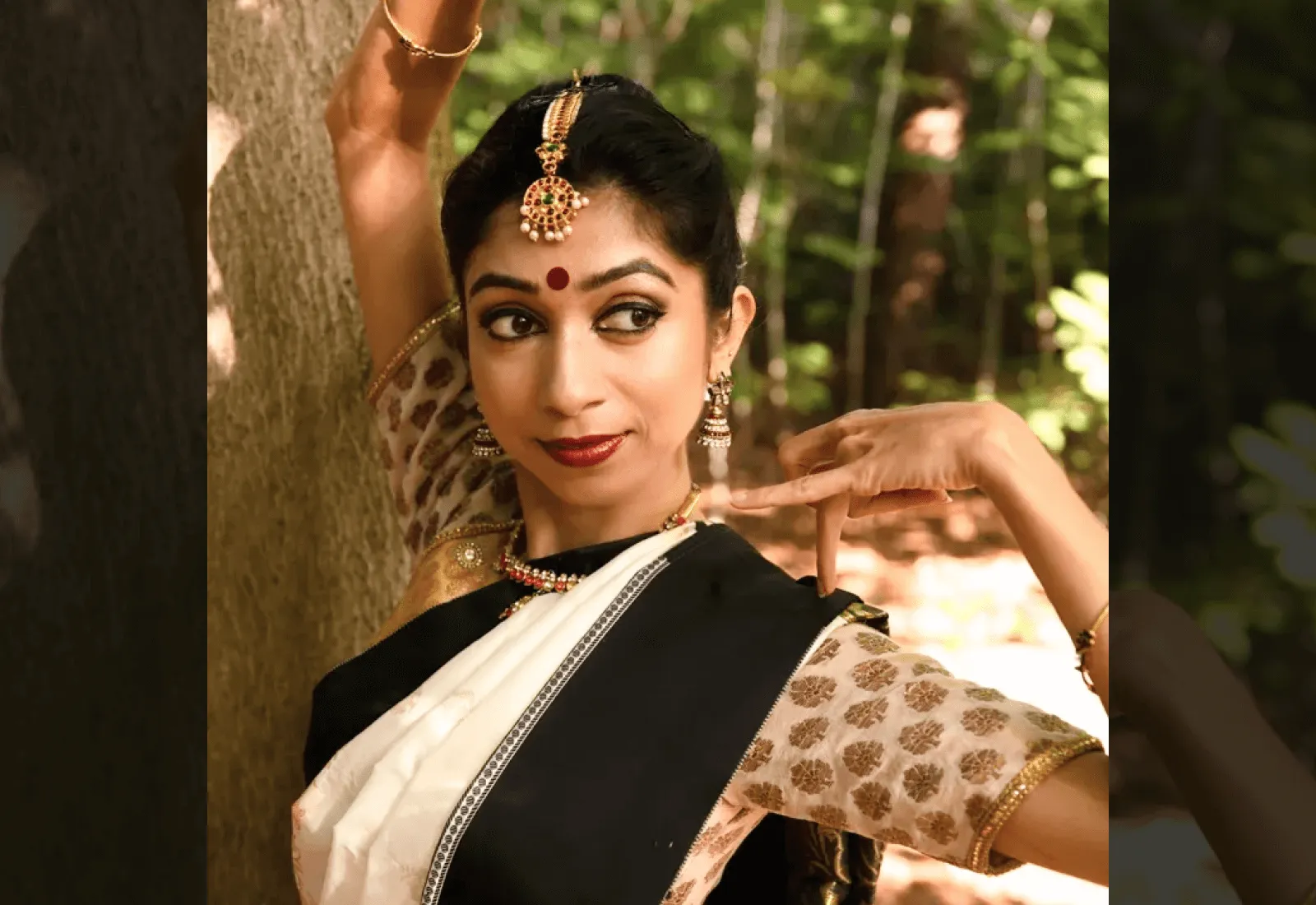
Top Famous Bharatanatyam Dancers
Here are some of the top famous Bharatanatyam dancers:
- Alarmel Valli
- Anita Ratnam
- Balasarswati
- Dr. Rekha Raju (View her course)
- Dr. Preeti (From Vijayalakshmi Academy of Arts) (View her course)
- Greeshma Rajan (View her course)
- Mala Prashanna (From Vijayalakshmi Academy of Arts) (View her course)
- Mallika Sarabhai
- Meenakshi Sundaram Pillai
- Mrinalini Sarabhai
- Padma Subramanyam
- Parijat Naik (View her course)
- Rukmini Devi
- Veena Chikkanahalli Seshadri (View her course)
- Yamini Krishnamurthy
- Vijayalakshmi Academy of Arts (View course)



